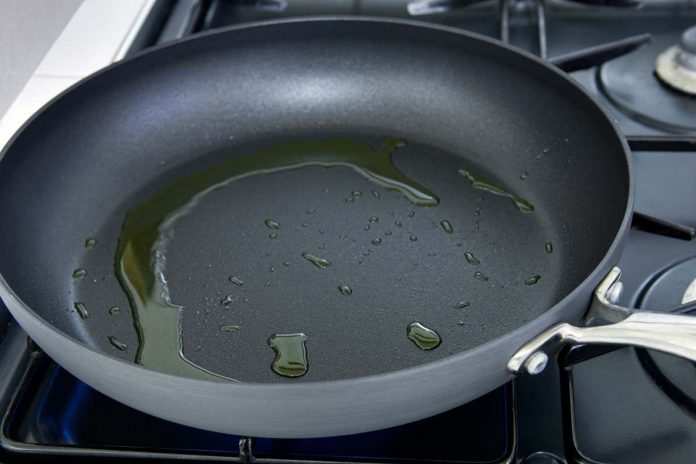[ad_1]

Rachel Husband / Alamy
Why does cooking oil sometimes suddenly retreat from the centre of a pan, leaving dry patches that cause food to stick? Scientists have pinpointed the physics behind this phenomenon, and their findings could help to refine a variety of industrial processes.
Alexander Fedorchenko at the Czech Academy of Sciences and a colleague recorded experiments with an overhead camera focused on a commercial non-stick pan with a coating of sunflower oil 1.5 millimetres thick. They discovered that uneven heating caused a process known as thermocapillary convection, which can draw oil towards the edges of a pan.
In their tests, the oil heated up faster in the centre of the pan. Surface tension tends to decrease in liquids as temperatures rise, which led to a gradient in surface tension across the pan. The stronger tension toward the edges pulled the less cohesive oil at the centre outwards and deformed the surface of the layer.
Advertisement
What about this: At this point a rupture can occur in the thinner part and leave a dry spot. The team found that past a critical size, the hole in the oil cannot heal. This critical point differs by temperature for each liquid, but is surpassed when the curved upper surface of a liquid is ruptured by the pull from the outer edge of the pan and surface tension is lost.
But any hole larger than that critical size would quickly grow. The edge of the dry spot in their experiment was measured to recede from the centre of the patch at a velocity of 5.5 centimetres per second.
Fedorchenko said it is now clear why food tends to stick in the centre of the pan and that there are a few steps that can be taken to avoid it while cooking. Increasing the thickness of oil will help to avoid it reaching a critically thin level, and using a pan with a more massive bottom will spread heat more evenly and prevent temperature gradients. Using moderate heat will also help, as will stirring the food regularly, recipe permitting.
The same findings could have important applications in industry as a thin flow of liquid over solid surfaces is key to many processes in the food, chemical and pharmaceutical sectors.
Journal reference: Physics of Fluids, DOI: 10.1063/5.0035547
More on these topics:
[ad_2]
Source link











